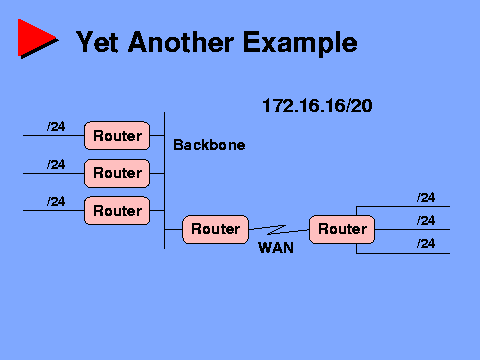

How large must the two summary blocks be? Well, the left-hand side of the network contains three /24 subnets, and the backbone, which fit into a /22 block. A /22 is also sufficient for the right-hand side of the network. Since four 22-bit prefixes fit within a 20-bit prefix, we have plenty of room. We'll being by assigning 172.16.16/22 to the left-hand side and then assign 172.16.20/22 to the right-hand side.
On the left, the three LAN segments and the Backbone will be numbered out of the left summary block. On the right, everything will be numbered out of the right summary block. The WAN link can be numbered from either block (or neither), so to conserve address space, I'll number it near the Backbone.
Here is one possible address assignment:
| Network Segment | Address Prefix |
|---|---|
| LAN A | 172.16.16/24 |
| LAN B | 172.16.17/24 |
| LAN C | 172.16.18/24 |
| Backbone | 172.16.19.0/28 |
| LAN D | 172.16.20/24 |
| LAN E | 172.16.21/24 |
| LAN F | 172.16.22/24 |
| WAN | 172.16.19.16/30 |